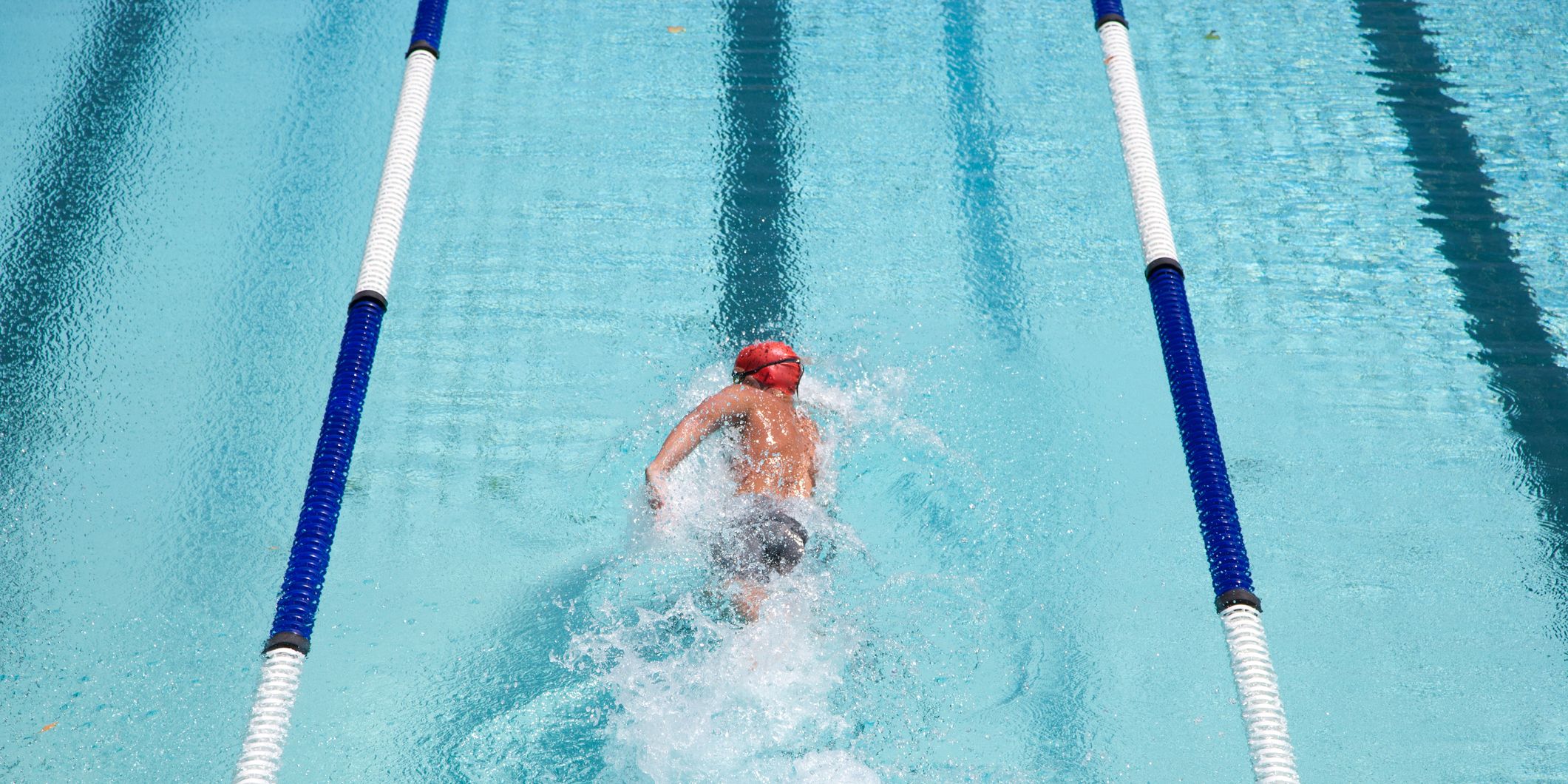
Take an Olympic swimmer and Olympic runner and stand them next to each other, and there’s no doubt both will look super fit. They’ll both also have excellent cardiovascular conditioning. “You often hear people wonder whether swimming is a cardiovascular workout, especially if it feels easy to them,” says Chris Gagliardi, the scientific education content manager at ACE Fitness. “Swimming is absolutely a cardio activity,” he says. It gets your heart rate up and increases the amount of oxygen your body consumes, which is the definition of what cardio is.
Is swimming a better cardio exercise than running?
This swimming versus running rivalry has been around for a long time. In fact, it’s two-thirds of what inspired the very first triathlon, which was a competition between a swimmer, a cyclist, and a runner to see who was more fit.
Swimming and running do different things for your body, but they both get your cardiovascular system in shape. Both create healthy changes in the heart, although they do it slightly differently. In athletes who do cardio, the left ventricle often gets larger and stronger so it can better handle pumping more blood quickly throughout the body in response to what you’re asking it to do.
Research published in Frontiers in Physiology looked at the hearts of elite runners and swimmers and saw that both had stronger, bigger left ventricles, but runners’ were even larger than swimmers’, likely because runners’ circulation has to work against gravity. Lying prone to swim places lower demands on the heart, so it doesn’t have to change as much. But the research didn’t find that one type of athlete’s heart was healthier than the other. So the “is swimming or running better” question is still a draw.
How to get cardio benefits from swimming
To get the most cardiovascular benefit from swimming, it helps to be reasonably decent at it. “If you’re a proficient runner—maybe you run a sub-six-minute mile, then all of a sudden you hop in the pool, if you’re not that strong of a swimmer, you won’t get the same benefits,” Gagliardi says. But if you refine your swimming skills so you don’t have to stop after every lap and you can give yourself a meaningful workout at a high intensity, you’ll see cardiovascular benefits.
You can burn as many calories swimming as you can running
“You might have to swim for longer than you run to achieve the same caloric result,” says Gagliardi.
Here’s how many calories a 160-pound guy would burn during each type of workout in 30 minutes, according to ACE Fitness numbers:
- Running at a 10-minute mile pace: 370 calories
- Running at a 6-minute mile pace: 548 calories
- Swimming recreationally fast (75 yards per minute): 378 calories
- Swimming moderately (50 yards a minute): 312 calories
Other facts about swimming versus running
Swimming and running ask different things from your body. Good runners tend to have stiff ankles while good swimmers tend to have flexible ones. A new sport called Swim Run has cropped up that combines both disciplines—you generally swim to one point, get out and run to another, then swim to another and so on. Some coaches call the sport the great leveler, since neither native swimmers nor native runners keep an advantage the whole way through.
Can you build muscle in the water?
Yes, but you really have to work at it and do specific exercises other than just swimming laps. Swimming will tone your whole body, but to build muscle, try these exercises in the pool.
